With 2020 headed for the exit (good riddance), it’s time once again for the annual listicles and retrospectives. In that spirit, let me note that it’s been a decade the Economic Cooperation Framework Agreement (ECFA) came into law in Taiwan on Jan 1, 2011. The “landmark” (in the sense that a shipwreck is a “landmark”) agreement, widely praised at the time by commentators who didn’t live in Taiwan, was formed after months of negotiations between the governments of China and Taiwan in 2010.
The reason I am writing this piece is that ECFA’s impact has been so mighty that you have probably forgotten its existence. Touted as a “free trade agreement” — “free trade” being to economics what unicorns are to biology — ECFA was a shining example of managed trade, with its “early harvest” and opening of some sectors, but not others.
It is hard now, looking at how ECFA has simply vanished from the public eye, to recapture the spirited debates and news coverage of the treaty. It dominated public discussion during the 2009-2011 period.
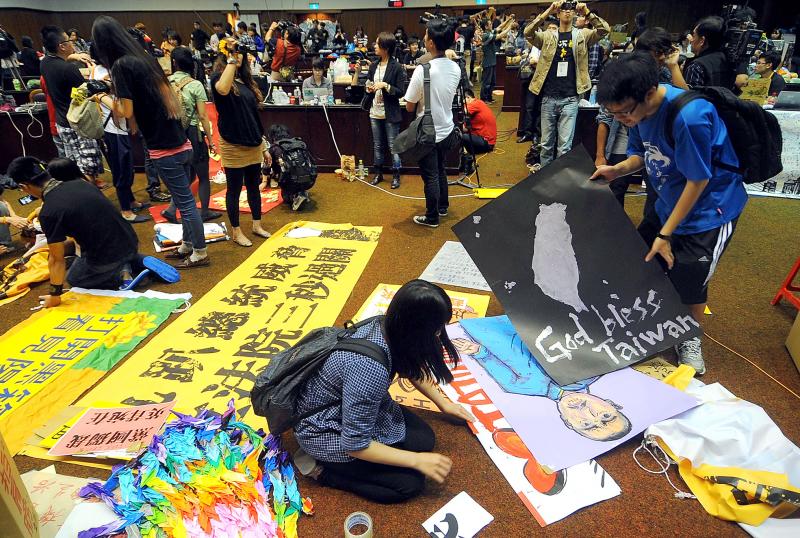
Photo: Wang Min-wei, Taipei Times
The treaty began life as the free trade agreement “comprehensive economic cooperation agreement” (CECA), but this usage quickly fell out of favor since it echoed China’s Closer Economic Partnership Arrangement (CEPA) with Hong Kong. Then-president Ma Ying-jeou (馬英九) declared CECA was “fixed national policy” but in the early spring of 2009 Ma re-presented it as ECFA, a watered-down version, vague in many of its particulars. Critics quickly pointed out that the Chinese Nationalist Party (KMT) approach infringed on Taiwan’s sovereignty by treating the nation as part of China.
Though ECFA was touted as a purely economic agreement, it gave every appearance of being driven by the KMT’s ideological commitment to annexing Taiwan to China. The KMT negotiated it as an internal agreement of “China.” This circumvented the World Trade Organization (WTO) rules mandating that trade privileges given to one member state by another be made available to all member states: ECFA was thus not an agreement between states, but between parts of a state.
As the critics argued, this subsumed Taiwan into China, reducing the nation’s sovereignty both in relation to China and in relation to the global legal order defined by the WTO and by the General Agreement on Tariffs and Trade (GATT).
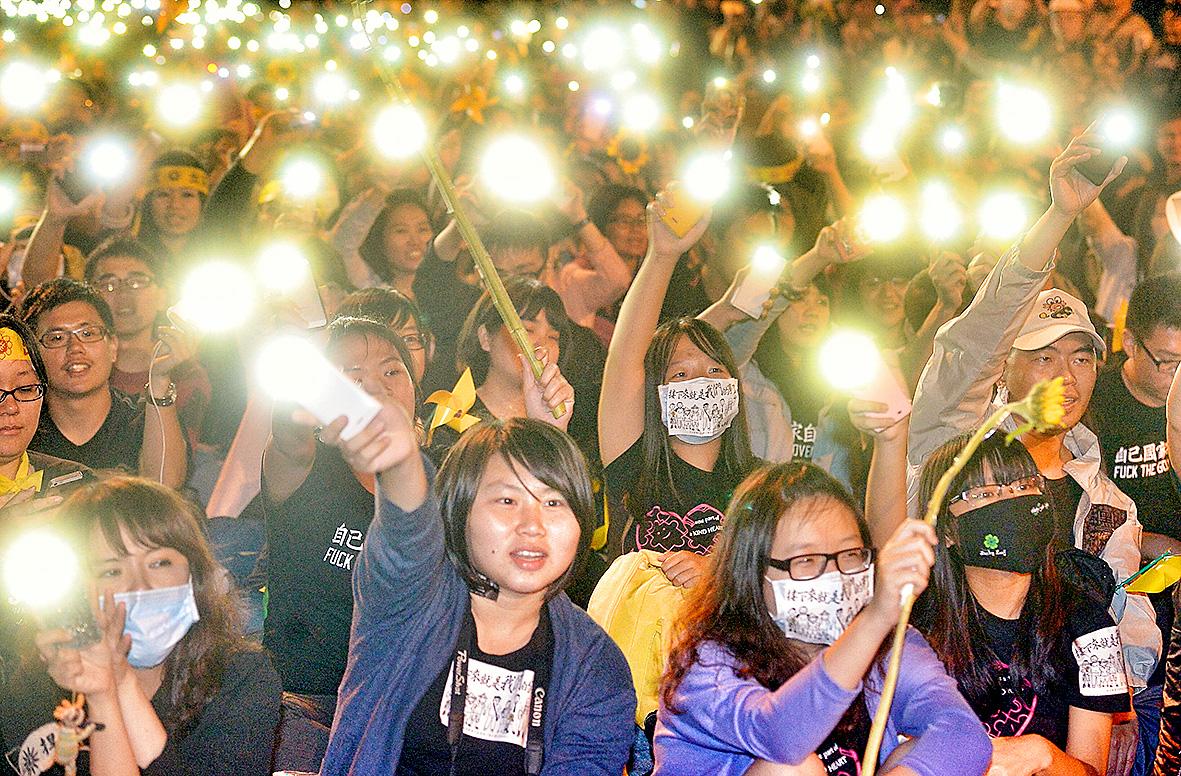
Photo: Wang Yi-sung, Taipei Times
Ma had promised that ECFA would not be passed without majority support, but numerous polls showed that the treaty lacked majority support. ECFA in fact fell on the wrong side of both of Taiwan’s major cleavages, between pro-Taiwan and pro-China viewpoints, and between the working class and self-employed, who opposed it, and managers and business owners, who supported it. Majority opposition to the follow-on Services Pact was the inevitable result of majority opposition to ECFA.
The KMT leadership apparently viewed ECFA as part of a package of policies aimed at Sinicizing Taiwan. For the KMT, globalization = Sinicization — remember Ma’s promotion of ECFA as going to the world through China? Ma’s proposed Free Economic Zones (FEZ) promised to flood Taiwan with Chinese products, ostensibly for reprocessing.
Critics noted that they would increase smuggling and attract labor-intensive, dirty, low-tech industries. Moreover, the FEZs regulations as planned exempted the zones from labor, environmental and other laws, with the obvious goal of bringing in Chinese labor for reprocessing. The Taoyuan Aerotropolis in its initial stages also called for legalizing Chinese labor. Bringing in Chinese workers was first mooted by the KMT leadership back in the 1990s. Rejected then, it remains an apparent goal of the party. The failure of ECFA and the follow-on services pact was rooted in negative public perceptions of these KMT goals.
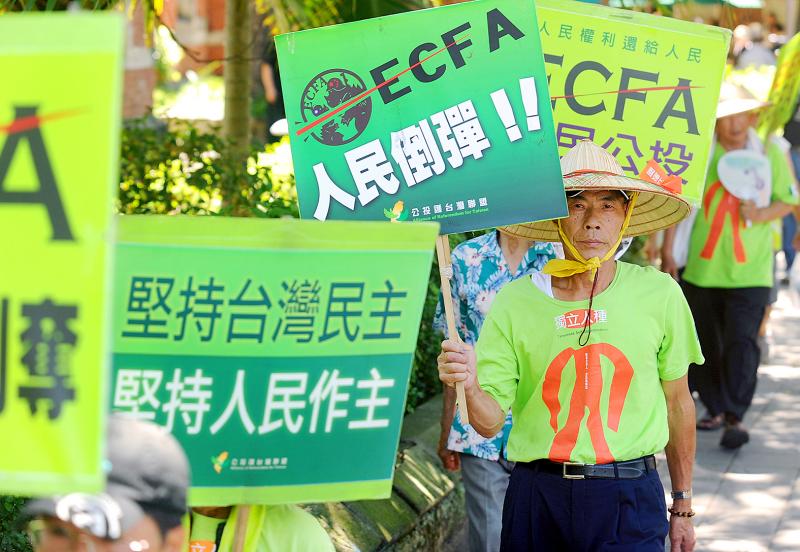
Photo: Liao Chen-huei, Taipei Times
In presenting ECFA the KMT followed the classic “shock doctrine” position, that without ECFA Taiwan could not grow, the economy was ailing and only ECFA could save it, Taiwan was going to be locked out of free trade agreements (FTAs) with other countries because China opposed them, Taiwan would become “isolated like North Korea,” excluded from Asia which was then forming a free trade region, and so forth.
Indeed, it had long been argued that the US would offer Taiwan an FTA if it first signed one with China. Of course, it’s 2020 and like immortality, fusion power and a Browns’ Super Bowl win, the bilateral trade agreement with the US remains just around the corner.
Predictably, in 2009 AmCham came out with a White Paper arguing that ECFA would lead to FTAs, followed by the European Chamber of Commerce with a similar argument in 2010. Comically, in 2013, long after it was apparent that ECFA was a failure on the FTA front, the WTO even came out with a book praising ECFA and saying that China would allow Taiwan to have FTAs because of the agreement.
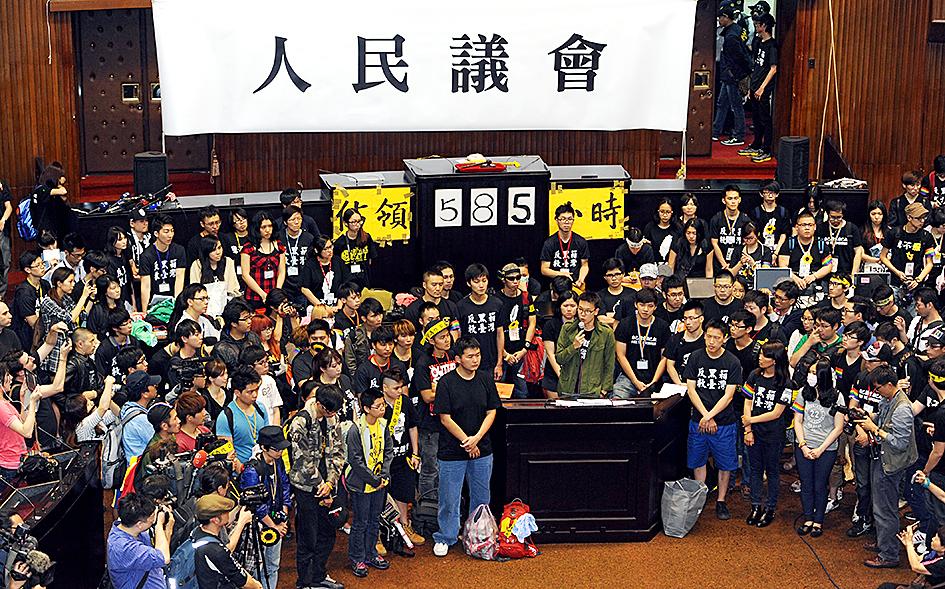
Photo: Peter Lo, Taipei Times
Naturally, as the more observant among us easily predicted, ECFA did not pay off in FTAs for Taiwan, which currently has just a handful. China never promised to stop opposing Taiwan’s FTAs with other countries, despite KMT rhetoric. Beijing’s real goal, after all, was to get Taiwan firms to relocate to China to take advantage of its FTAs, part of its larger goal of hollowing out Taiwan’s economy and stealing its brains and technology. The idea that ECFA would result in an avalanche of FTAs was simply cargo cult economics.
A decade later Taiwan remains one of the world’s most integrated and important trading states, with a steady if slowly growing economy, and expanded trade relations with southeast Asia. ECFA has meant nothing for any of this growth.
This appears to be a common judgment on ECFA in the scholarly literature. A study last year by Huang Chien-ern (黃健兒) and Wang Kuo-feng (王國鳳), for example, observes that “ECFA shows the negative and significant effects on Taiwan’s eight major industries’ exports to China” and “ECFA does not seem to promote the growth of Taiwan’s export trade,” two promises made by promoters.
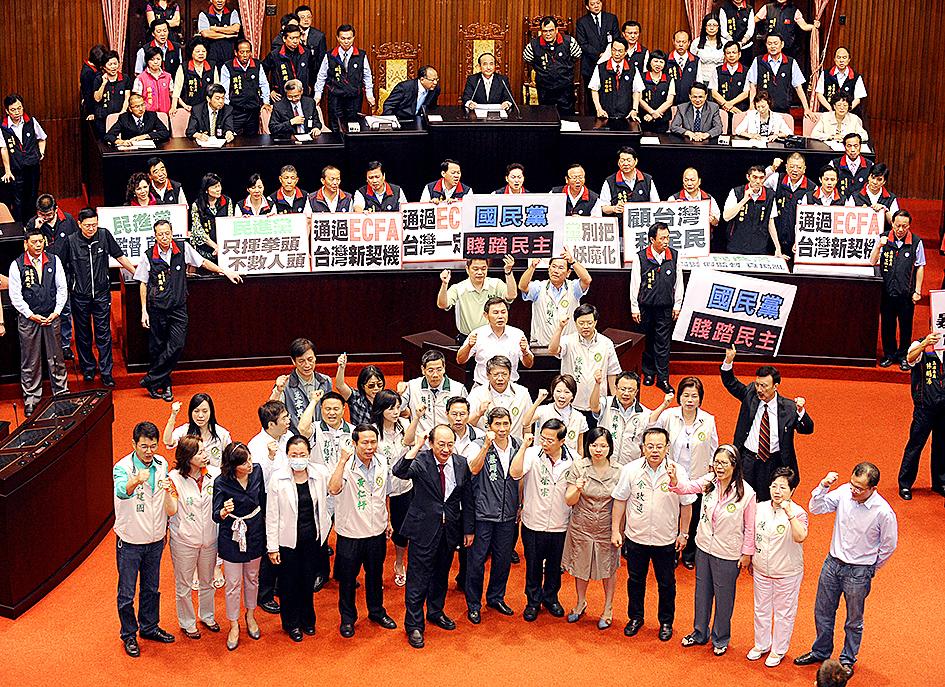
Photo: Fang Pin-chao, Taipei Times
Similarly, Chiang Min-hua (江敏華) of the National University of Singapore observed in a book on China and Asian integration published this year that “the effect of ECFA on Taiwan’s overall economy has been limited.”
There was one area where ECFA had a profound effect on Taiwan’s economy: the nation’s trade surplus with China. According to Bureau of Trade statistics, in 2008, when then-president Chen Sui-bian (陳水扁) left office after presiding over a massive expansion of trade with and investment in China, Taiwan’s trade surplus with its authoritarian enemy stood at US$35.5 billion. In 2010 just before ECFA it hit US$40 billion. By 2015 it had plummeted to US$27 billion, 2006 levels. When Ma left office in 2016 it stood at US$29 billion. Looking at these numbers, it is hard to avoid the conclusion that one of ECFA’s hidden goals was to shower Taiwan with Chinese imports.
Similarly, ECFA slammed the brakes on growth in Taiwan’s trade with China. Total trade peaked at US$130 billion under Ma in 2014, falling to US$117 billion in 2017. It had reached US$98 billion under Chen Shui-bian. Exports to China from Taiwan followed a similar pattern, while imports from China grew from US$35 billion to US$50 billion. Again, it appears that ECFA’s purpose, once you peel away the rhetorical camouflage, was to increase imports from China.
Luckily in 2016 the pro-Taiwan side won the presidency. Looking back at the failure of not only ECFA but its associated policies and agreements, it is clear that Tsai Ing-wen’s (蔡英文) victory in 2016 saved Taiwan from accelerated hollowing out of its economy and further assimilation to Chinese control of its economic and political future.
Which is, in the end, why you have forgotten about ECFA.
Notes from Central Taiwan is a column written by long-term resident Michael Turton, who provides incisive commentary informed by three decades of living in and writing about his adoptive country.

Most heroes are remembered for the battles they fought. Taiwan’s Black Bat Squadron is remembered for flying into Chinese airspace 838 times between 1953 and 1967, and for the 148 men whose sacrifice bought the intelligence that kept Taiwan secure. Two-thirds of the squadron died carrying out missions most people wouldn’t learn about for another 40 years. The squadron lost 15 aircraft and 148 crew members over those 14 years, making it the deadliest unit in Taiwan’s military history by casualty rate. They flew at night, often at low altitudes, straight into some of the most heavily defended airspace in Asia.

Taiwan’s democracy is at risk. Be very alarmed. This is not a drill. The current constitutional crisis progressed slowly, then suddenly. Political tensions, partisan hostility and emotions are all running high right when cool heads and calm negotiation are most needed. Oxford defines brinkmanship as: “The art or practice of pursuing a dangerous policy to the limits of safety before stopping, especially in politics.” It says the term comes from a quote from a 1956 Cold War interview with then-American Secretary of State John Foster Dulles, when he said: ‘The ability to get to the verge without getting into the war is

Like much in the world today, theater has experienced major disruptions over the six years since COVID-19. The pandemic, the war in Ukraine and social media have created a new normal of geopolitical and information uncertainty, and the performing arts are not immune to these effects. “Ten years ago people wanted to come to the theater to engage with important issues, but now the Internet allows them to engage with those issues powerfully and immediately,” said Faith Tan, programming director of the Esplanade in Singapore, speaking last week in Japan. “One reaction to unpredictability has been a renewed emphasis on

Beijing’s ironic, abusive tantrums aimed at Japan since Japanese Prime Minister Sanae Takaichi publicly stated that a Taiwan contingency would be an existential crisis for Japan, have revealed for all the world to see that the People’s Republic of China (PRC) lusts after Okinawa. We all owe Takaichi a debt of thanks for getting the PRC to make that public. The PRC and its netizens, taking their cue from the Chinese Communist Party (CCP), are presenting Okinawa by mirroring the claims about Taiwan. Official PRC propaganda organs began to wax lyrical about Okinawa’s “unsettled status” beginning last month. A Global